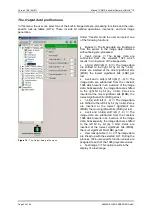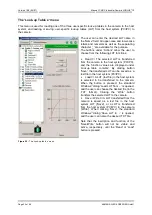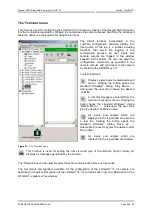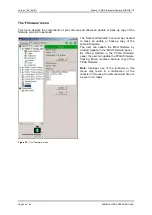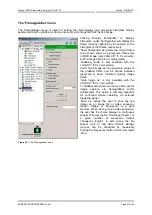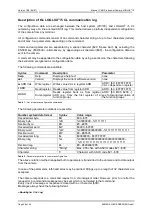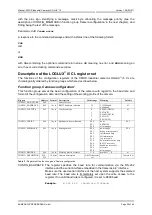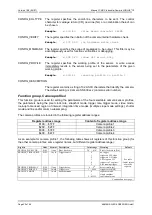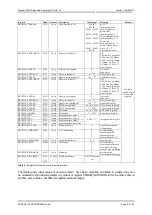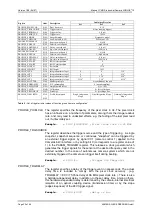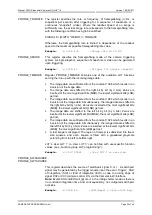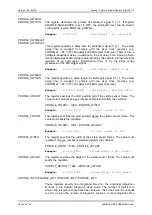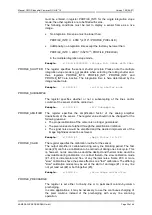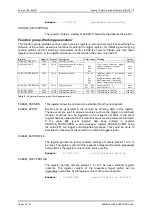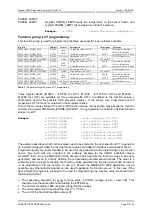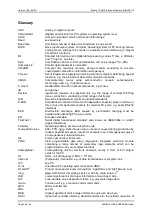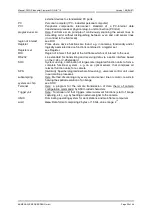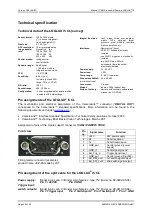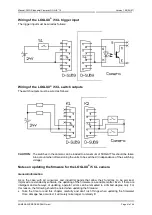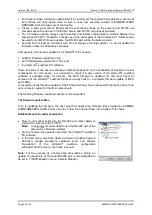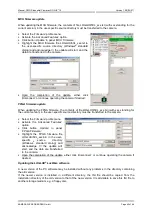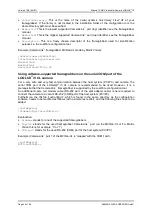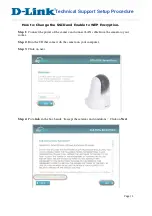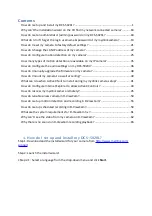
Manual: CMOS Industrial Camera LOGLUX
i5
Version 1.08 (04/07)
KAMERA WERK DRESDEN GmbH
Page 35 of 46
must be entered in register PROFILE_INT3 for the
single integration slope
mode; the other registers are to be filled with zeros.
The following conditions must be met to display a sensor frame as a live
image:
•
No integration time value must be lower than:
PROFILE_INTX >= 4000 * (40
.
10
6
/ PROFILE_PIXELCLK)
•
Additionally, no integration time except the last may be lower than:
PROFILE_INTX > 4000 * (3.52
.
10
12
/ PROFILE_PIXELCLK)
in the
multiple integration slope
mode.
Example:
w $138 #24000000
;single int. SMode with 24ms
PROFILE_SHUTTER
The register specifies the sensor shutter principle. Please note the
multiple
integration slope
mode is not possible when selecting the
rolling shutter
and,
thus, registers PROFILE_INT0, PROFILE_INT1, PROFILE_INT2 and
PROFILE_INT3 are inactive. The integration time is here determined by the
image readout rate.
Example:
w $148 #1
;rolling shutter mode
PROFILE_SUBSAMPLE
The register specifies whether or not a subsampling of the lines and/or
columns of the sensor shall be carried out.
Example:
w $149 #3
;X/Y Subsampling
PROFILE_AMLIFIER
The register specifies the amplification factor of the analog amplifier
downstream of the sensor. The register value should not be changed for the
following reasons:
•
The proper calibration of the camera is no longer guaranteed.
•
The pixel values are falsified through the amplification limitation.
•
The signal noise would be amplified and the desired improvement of the
image brightness cannot be achieved.
Example:
w $14A #1
;Ampl.factor is 5.25
PROFILE_CALIB
The register specifies the calibration routine for the sensor.
The output amplifier is calibrated during every line blanking period. The fast
mode (#0) can force a calibration to be carried out during one clock cycle. This
is, however, not as accurate as would be desired, and thermal noise would be
unavoidable during calibration; in contrast thereto, the slow calibration mode
(#1...#3) is incremental and free of any thermal noise. Some 200 or more
"slow" calibrations have the same effect as one "fast" calibration. The differing
"slow" calibration modes may be set at the start of an image (#1) or any line
not yet read out (#2) or both together (#3).
Example:
w $14B #1
;slow image calibration
PROFILE_PRECHARGE
The register is set either to line-by-line or to permanent column-by-column
precharging.
In some applications, it may be necessary to use the continuous charging of
the pixel columns instead of the precharging with every line scanning
operation.


